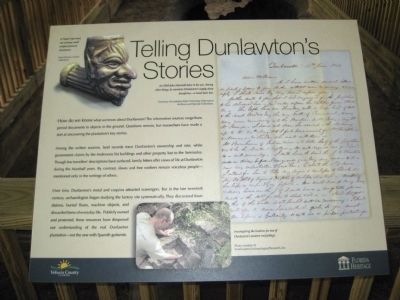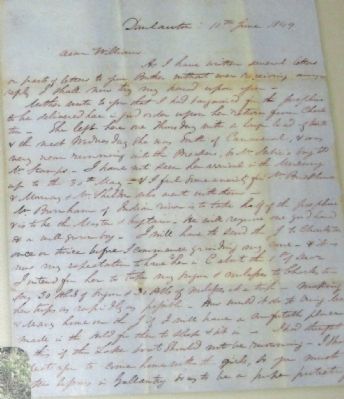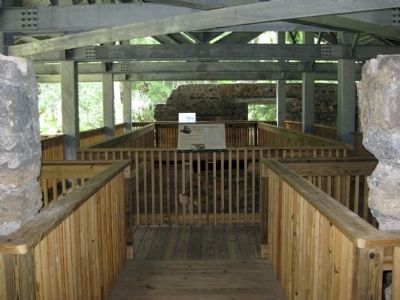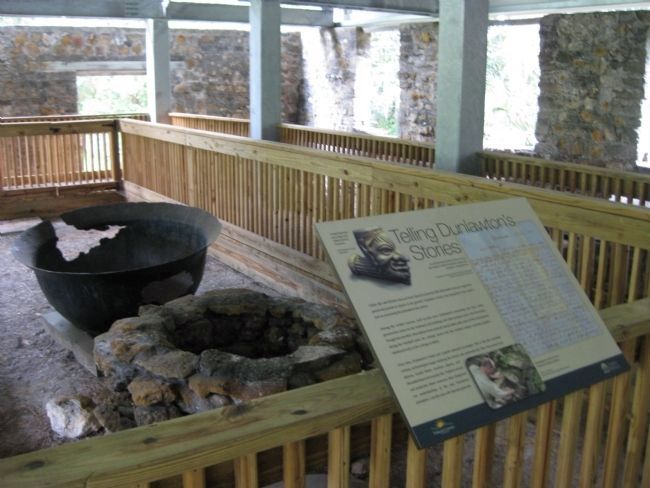Port Orange in Volusia County, Florida — The American South (South Atlantic)
Telling Dunlawton's Stories
Among the written sources, land records trace Dunlawton's ownership and size, while government claims by the Andersons list buildings and other property lost to the Seminoles. Though few travellers' descriptions have surfaced, family letters offer views of life at Dunlawton during the Marshall years. By contrast, slaves and free workers remain voiceless people - mentioned only in the writings of others
Over time, Dunlawton's metal and coquina attracted scavengers. But in the late twentieth century, archaeologists began studying the factory site systematically. They discovered foundations, buried floors, machine objects, and discarded items of everyday life. Publicly owned and protected, these resources have deepened our understanding of the real Dunlawton plantation - not the one with Spanish guitarists.
[ Image ]
A "Satan" pipe bowl, one of many small artifacts found at Dunlawton.
From Volusia County collections
[ Letter ]
An 1849 John Marshall letter to his son. Among other things, he mentions Dunlawton's supply sloop Josephine - a vessel later lost.
Courtesy of Louisiana State University-Shreveport Archives and Special Collections.
[ Photo ]
Investigating the location for one of Dunlawton's modern roof pilings.
Photo courtesy of Southeastern Archaeological Research, Inc.
Erected by Volusia County and the State of Florida, Department of State, Division of Historical Resources, assisted by the Florida Historical Commission.
Topics. This historical marker is listed in these topic lists: Industry & Commerce • Settlements & Settlers • Wars, US Indian • Waterways & Vessels. A significant historical year for this entry is 1849.
Location. 29° 8.478′ N, 81° 0.344′ W. Marker is in Port Orange, Florida, in Volusia County. Marker can be reached from Old Sugar Mill Road east of Herbert Street, on the left when traveling east. The marker is on the grounds of the Dunlawton Sugar Mill Botanical Gardens, mounted along the boardwalk at the sugar mill ruins. Touch for map. Marker is at or near this postal address: 950 Old Sugar Mill Road, Port Orange FL 32129, United States of America. Touch for directions.
Other nearby markers. At least 8 other markers are within walking distance of this marker. From the Boardwalk (here, next to this marker); The Most Dangerous Chieftain (a few steps from this marker); Living on the Edge (a few steps from this marker); Working (a few steps from this marker); Sugar Making (a few steps from this marker); Dunlawton's Building Blocks (a few steps from this marker); The Roof (a few steps from this marker); Spanish Mills and Bongoland (a few steps from this marker). Touch for a list and map of all markers in Port Orange.
More about this marker. The marker features the logos of Volusia County and the Florida Heritage program.
Regarding Telling Dunlawton's Stories. The site was listed with the National Register of Historic Places in 1973 under the name Dunlawton Plantation--Sugar Mill Ruins (# 73000606).
Related markers. Click here for a list of markers that are related to this marker. To better understand the story of the Dunlawton Plantation and Sugar Mill Ruins, study each marker in the order shown.
Credits. This page was last revised on June 16, 2016. It was originally submitted on August 26, 2011, by Glenn Sheffield of Tampa, Florida. This page has been viewed 653 times since then and 21 times this year. Photos: 1. submitted on August 26, 2011, by Glenn Sheffield of Tampa, Florida. 2, 3, 4. submitted on August 27, 2011, by Glenn Sheffield of Tampa, Florida. • Bill Pfingsten was the editor who published this page.



